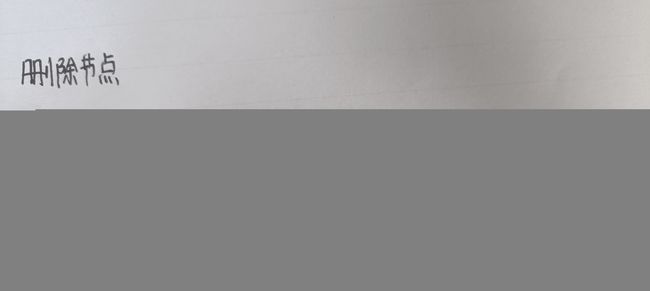数据结构学习——双向链表
文章目录
- 前言——双向链表含义
- 一、双向链表结构(图解)
- 二、 双向链表的实际操作
-
- 1、 结构
- 2、创建头结点
- 3、打印
- 4、插入
- 5、定位
- 6、删除
- 完整代码
- 运行结果
前言——双向链表含义
双向链表也叫双链表,是链表的一种,它的每个数据结点中都有两个指针,分别指向直接后继和直接前驱。所以,从双向链表中的任意一个结点开始,都可以很方便地访问它的前驱结点和后继结点。一般我们都构造双向循环链表。
一、双向链表结构(图解)
二、 双向链表的实际操作
1、 结构
/**
* Double linked list of integers. The key is char.
*/
typedef struct DoubleLinkedNode
{
char data;
struct DoubleLinkedNode *previous;
struct DoubleLinkedNode *next;
}DLNode,*DLNodePtr;
2、创建头结点
/**
* Initialize the list with a header.
* @return The pointer to the header.
*/
DLNodePtr initLinkList(){
DLNodePtr tempHeader =(DLNodePtr)malloc(sizeof(struct DoubleLinkedNode));
tempHeader->data = '\0';
tempHeader->previous = NULL;
tempHeader->next=NULL;
return tempHeader;
}
3、打印
/**
* Print the list.
* @param paraHeader The header of the list.
*/
void printList(DLNodePtr paraHeader)
{
DLNodePtr p= paraHeader->next;
while(p!=NULL)
{
printf("%c",p->data);
p = p->next;
}
printf("\r\n");
}
4、插入
void insertElement(DLNodePtr paraHeader,char paraChar,int paraPosition)
{
DLNodePtr p,q,r;
p = paraHeader;
int i;
for (i=0;i< paraPosition;i++)
{
p=p->next;
if(p==NULL)
{
printf("The position %d is beyond the scope of the list.",paraPosition);
return;
}
}
q=(DLNodePtr)malloc(sizeof(struct DoubleLinkedNode));
q->data = paraChar;
r = p->next;
q->next = p->next;
q->previous = p;
p->next = q;
if(r!=NULL)
{
r->previous = q;
}
}
5、定位
void locateELement(DLNodePtr paraHeader,char paraChar)
{
DLNodePtr p,q,r;
int i=1;
p=paraHeader;
while((p->next !=NULL)&&(p->next->data !=paraChar))
{
p=p->next;
i++;
}
if(p->next == NULL)
{
printf("The char '%c' does not exist.\r\n",paraChar);
return;
}
printf("%d\n",i);
}
6、删除
void deleteElement(DLNodePtr paraHeader,char paraChar)
{
DLNodePtr p,q,r;
p=paraHeader;
while((p->next !=NULL)&&(p->next->data !=paraChar))
{
p=p->next;
}
if(p->next == NULL)
{
printf("The char '%c' does not exist.\r\n",paraChar);
return;
}
q=p->next;
r=q->next;
p->next=r;
if(r!=NULL)
{
r->previous = p;
}
free(q);
}
完整代码
#include 


